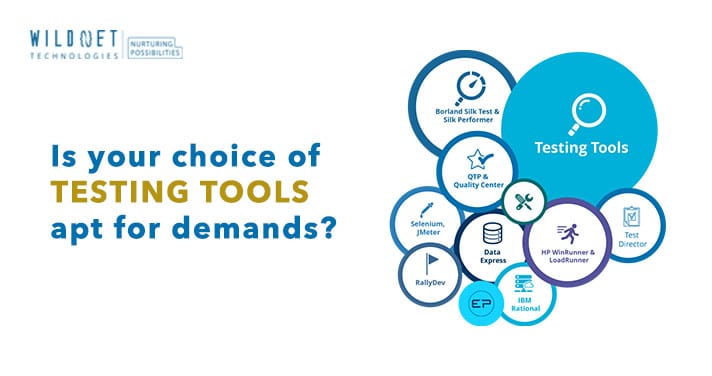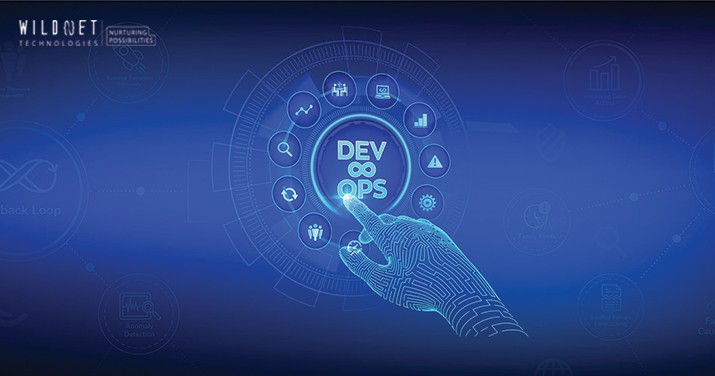In the rapidly evolving world of artificial intelligence, two models frequently dominate the conversation: Perplexity AI and ChatGPT. These natural language processing (NLP) powerhouses have garnered attention for their ability to understand, interpret, and generate human-like text. But how do they truly compare? Whether you’re an AI enthusiast, a professional seeking the right tool, or just curious about the latest tech advancements, this in-depth Perplexity AI vs ChatGPT analysis will break down their features, performance, strengths, and ideal applications. By the end, you’ll have a clear understanding of which AI suits your needs—explained in a way that’s easy to grasp and packed with detail.
What Are Perplexity AI and ChatGPT?
Before diving into the Perplexity AI vs ChatGPT comparison, let’s establish what these models are. Both are advanced AI systems designed to process and produce human-like text, but they cater to slightly different purposes.
- Perplexity AI: Developed by EleutherAI, Perplexity AI is a research-driven model that excels at answering complex queries with precision and context. It’s built to provide logical, well-structured responses, often pulling real-time information from the web to stay current.
- ChatGPT: Created by OpenAI, ChatGPT is a conversational AI juggernaut. It’s designed to simulate human dialogue, generate creative text, and handle a wide range of interactions—from casual chats to detailed explanations.
Both rely on machine learning and vast datasets to mimic human language, but their approaches and focuses differ. This Perplexity AI vs ChatGPT exploration will uncover how those differences play out in practice.
Origins and Development: Where They Come From
Understanding the roots of these AIs provides context for their capabilities. In the Perplexity AI vs ChatGPT narrative:
- Perplexity AI: Born from EleutherAI, a collective of researchers passionate about open-source AI innovation, Perplexity AI reflects a mission to democratize advanced machine learning. Its development emphasizes practical problem-solving and real-time data integration, making it a dynamic tool for users seeking up-to-date answers.
- ChatGPT: A product of OpenAI, founded by visionaries like Elon Musk and Sam Altman, ChatGPT is part of a broader effort to advance AI for societal benefit. It builds on the GPT (Generative Pre-trained Transformer) architecture, evolving through iterations to become a leader in conversational AI.
Both models are the result of years of refinement, but their origins shape their strengths—Perplexity AI leans toward research and query resolution, while ChatGPT prioritizes dialogue and creativity.
Technology and Training Data: The Engine Under the Hood
At their core, Perplexity AI and ChatGPT share a technological foundation: transformer models, a type of neural network architecture that excels at understanding language patterns. However, the Perplexity AI vs ChatGPT comparison reveals key differences in how they’re built and trained.
- Perplexity AI: This model integrates diverse data sources, including real-time web content, to provide fresh, relevant answers. Its training emphasizes breadth and adaptability, allowing it to handle niche or evolving topics with accuracy.
- ChatGPT: Trained on a massive corpus of text—think books, articles, and internet data curated up to a specific cutoff (e.g., December 2024 for the latest versions)—ChatGPT relies on a static but expansive dataset. It’s supplemented by human feedback to fine-tune its conversational tone and accuracy.
In practice, Perplexity AI’s real-time access gives it an edge for current events, while ChatGPT’s deep training makes it a master of broad, timeless knowledge. Both evolve with use, but their data strategies set them apart.
Language Processing Capabilities: How They Handle Text
Language processing is the heart of any NLP model, and both Perplexity AI and ChatGPT excel here—albeit in different ways. The Perplexity AI vs ChatGPT lens highlights:
- Perplexity AI: Imagine asking, “What’s the latest breakthrough in quantum computing?” Perplexity AI doesn’t just guess—it digs into recent sources and delivers a clear, structured response. It’s built for precision, excelling at dissecting complex questions and providing concise, relevant answers.
- ChatGPT: Picture a friendly chat where you ask, “Tell me a story about a robot.” ChatGPT weaves a detailed, engaging tale with human-like flair. It thrives on generating long-form text and sustaining natural, flowing conversations.
Both use machine learning to interpret context and craft responses, but Perplexity AI prioritizes factual depth, while ChatGPT focuses on conversational breadth.
Conversational Abilities and Response Quality: Talking the Talk
Can these AIs hold a conversation? Absolutely—but their styles differ. In a Perplexity AI vs ChatGPT face-off:
- Perplexity AI: This model is like a knowledgeable professor. It handles multi-step dialogues with ease, answering follow-ups like “Why does that work?” without losing track. Its responses are crisp, logical, and packed with insight—perfect for users who want substance over small talk.
- ChatGPT: Think of ChatGPT as a witty friend. It can banter about movies, debate philosophy, or explain science in a way that feels personal and engaging. Its strength lies in producing detailed, entertaining replies that keep the conversation alive.
For example, ask both about climate change. Perplexity AI might list recent stats and solutions, while ChatGPT could weave a narrative about its impact. Both shine, but their tones—informative vs. conversational—cater to different tastes.
Accuracy and Relevance of Responses: Getting It Right
Accuracy is non-negotiable in AI, and relevance keeps users coming back. The Perplexity AI vs ChatGPT comparison shows:
- Perplexity AI: Designed for precision, it excels at delivering spot-on answers to specific, complex queries. Ask about a niche topic like “graphene battery advancements,” and it’ll provide current, sourced details—rarely straying off-topic.
- ChatGPT: It aims for accuracy too, but with a twist—it prioritizes user engagement. Ask the same question, and it might give a solid overview with a dash of flair, though it could lack the latest updates due to its training cutoff.
Perplexity AI wins for up-to-the-minute accuracy, while ChatGPT balances correctness with appeal, making it more versatile for casual use.
User Experience and Interface: Ease of Interaction
A great AI isn’t just smart—it’s user-friendly. In the Perplexity AI vs ChatGPT breakdown:
- Perplexity AI: Its interface is sleek and no-nonsense, designed for quick queries. You type a question, and it delivers a clean, organized answer—often with source links. It’s like a search engine with a brain, ideal for efficiency-focused users.
- ChatGPT: Available via OpenAI’s platform or integrations, its interface is warm and intuitive. It invites longer interactions, with a chat-style layout that feels natural and encouraging—perfect for those who enjoy a conversational vibe.
Both prioritize usability, but Perplexity AI is streamlined for speed, while ChatGPT fosters a more relaxed, interactive experience.
Functionality and Customization Options: Tailoring the Tool
Flexibility can make or break an AI’s usefulness. The Perplexity AI vs ChatGPT analysis reveals:
- Perplexity AI: It offers API access for developers, letting you integrate it into apps or workflows. Customization is straightforward—tweak it for specific tasks like research or coding support.
- ChatGPT: OpenAI’s API is robust, enabling integration into chatbots, websites, and more. It’s highly adaptable, with options to fine-tune tone or behavior for unique scenarios, like customer service or creative writing.
Both are customizable, but ChatGPT’s broader ecosystem gives it a slight edge for diverse applications.
Notable Attributes and Suitability: What Sets Them Apart
Each AI has a unique flavor. In Perplexity AI vs ChatGPT:
- Perplexity AI: Best for technical minds—think programmers needing code snippets or researchers seeking precise data. Its real-time insights and problem-solving skills make it a go-to for accuracy-driven tasks.
- ChatGPT: A creative powerhouse, ideal for writers, marketers, or anyone needing polished, human-like text. It’s also great for customer-facing roles due to its conversational charm.
Your choice depends on whether you value factual depth (Perplexity AI) or narrative finesse (ChatGPT).
Perplexity AI’s Standout Features
Perplexity AI brings distinct strengths to the Perplexity AI vs ChatGPT table:
- Code Generation: Need a Python script? It can write it, debug it, and explain it—perfect for developers.
- Real-Time Data: It pulls fresh info from the web, keeping answers current for fast-moving topics.
- Complex Query Handling: From academic research to business analytics, it tackles tough questions with clarity.
These features make it a favorite for technical and research-heavy users.
ChatGPT’s Standout Features
ChatGPT shines differently in the Perplexity AI vs ChatGPT matchup:
- Creative Writing: It crafts stories, ads, or essays with a human touch—ideal for content creators.
- Conversational Depth: It mimics human dialogue so well, it’s a top pick for chatbots and support roles.
- Text Summarization: Long reports? It condenses them into digestible summaries, saving time.
These traits cater to users who prioritize engagement and versatility.
Social Aspects and Future Development: Beyond the Tech
AI isn’t just about code—it’s about impact. The Perplexity AI vs ChatGPT lens highlights:
- Privacy and Security: Both handle sensitive data, but their approaches differ. Perplexity AI’s web reliance raises questions about data sourcing, while ChatGPT’s static training has its own privacy nuances. Check their policies to understand what’s at stake.
- Environmental Footprint: Training and running these models burn energy. Perplexity AI’s real-time processing might edge higher in resource use, but ChatGPT’s scale isn’t light either. Sustainability is a growing concern for both.
- Future Growth: Expect Perplexity AI to deepen its real-time capabilities and ChatGPT to enhance its conversational finesse. Ethical development will shape their trajectories.
These factors matter if you’re weighing long-term implications.
Conclusion: Perplexity AI vs ChatGPT—Which Wins for You?
The Perplexity AI vs ChatGPT debate doesn’t have a universal winner—it’s about fit. Perplexity AI is your pick if you need precise, current answers for technical or research tasks. ChatGPT is the choice for creative, conversational, or broad-use scenarios. Consider your goals, budget, and values—whether it’s cutting-edge accuracy or engaging dialogue, one of these AIs will rise to the occasion. As NLP advances, both promise exciting possibilities ahead.
Wildnet Technologies is a leading Digital Transformation Agency in India that caters the best possible digital marketing services with apt technology & trend infusion, be it AI or more!
Read More:
- Introducing OpenAI o1-Preview: Pioneering a New Era of AI Reasoning Models
- Will AI replace SEO with the emergence of AI Search Engines?
- Top 10 free AI-to-human text converter tools
- SEO & AI: Chaos in Marketing
- AI PCs in 2024: What about AI OS?
- The World’s First AI Software Engineer Devin & India’s First Devika
FAQ
FAQ 1: What is the primary difference between Perplexity AI and ChatGPT?
Perplexity AI focuses on statistical language modeling, while ChatGPT excels in conversational AI with a broader understanding of context and dialogue flow.
FAQ 2: Which AI is better for generating human-like conversations, Perplexity AI or ChatGPT?
ChatGPT is more effective at generating natural, human-like conversations, while Perplexity AI emphasizes understanding word perplexity in language processing.
FAQ 3: How do Perplexity AI and ChatGPT differ in user experience?
ChatGPT offers more interactive and intuitive user experiences, while Perplexity AI is typically used for linguistic research and model evaluation.
FAQ 4: In what scenarios would you choose Perplexity AI over ChatGPT?
Perplexity AI is preferred for analyzing language models and their accuracy, while ChatGPT is best for chatbots, virtual assistants, and creative writing tasks.
FAQ 5: Can both Perplexity AI and ChatGPT be used for content creation?
ChatGPT is widely used for content creation due to its conversational capabilities, while Perplexity AI is more specialized for linguistic evaluations.






